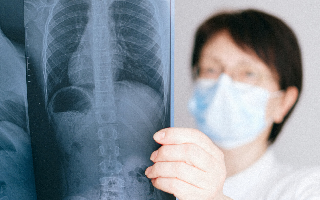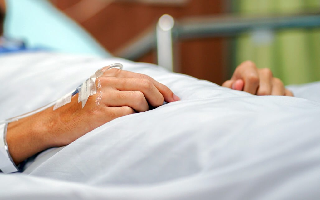
- No win. No fee.
- No hidden costs
- 100% risk-free, only pay if you win
- Home >
- Insights >
- Misdiagnosis Claims >
- How do you prove a medical misdiagnosis?
About the Author
Gillian Gadsby
Medical Negligence Solicitor, Co-founder and Managing Partner - LLB (Hons) University of East Anglia, 1989
Read more about Gillian »Diagnosis is an essential skill for a wide range of healthcare providers. Doctors, nurses, surgeons and more are expected to be able to identify a wide range of diseases and conditions, or recognise damage caused to organs or limbs.
In most circumstances, this duty is carried out competently and in a timely manner. However, whether it is overlooking an anomaly on a scan, or attributing symptoms to a completely different condition, misdiagnoses do happen. And, when they do, they can have serious implications to the wellbeing of individuals and their families, and sometimes even prove fatal.
When this occurs, those affected may be entitled to answers and compensation. But, that is dependent on proving that the misdiagnosis was directly responsible for the suffering of the individual in question, and if their healthcare provider acted “unreasonably” in their approach to diagnosing them.
Here, we will outline what is required to prove a misdiagnosis claim, and the process that your solicitors should take to determine this on your behalf.
How do you prove a medical misdiagnosis?
What can constitute a medical misdiagnosis?
Situations that may result in a successful misdiagnosis claim include:
- Incorrect diagnosis, leading to inappropriate treatment
- Missed diagnosis, resulting in no treatment or delayed treatment
- Failure to spot symptoms of a serious underlying health condition
- Not recognising complications that change or worsen a condition
- Failure to diagnose a related disease
Any of these may have a number of implications for affected patients and their loved ones. For instance, an incorrect diagnosis could lead to a patient undergoing unnecessary, invasive treatments, that both cause them avoidable pain or discomfort and do not resolve the actual problem they are facing.
Alternatively, a missed diagnosis can lead to patients being sent home without being treated. This would allow the disease or injury to progress and, depending on the condition, could place that individual in a precarious state when they finally receive treatment, or drastically alter their prognosis from when they were originally seen by their healthcare provider.
At Gadsby Wicks, we recognise the life-altering consequences a medical misdiagnosis can have, which is why we apply the time and attention to detail necessary to proving whether or not a misdiagnosis was a result of negligence.
The three elements to proving a medical misdiagnosis
Like other forms of medical negligence claim, three key elements need to be determined:
- Your healthcare provider’s duty of care towards you was breached
- You suffered pain, injury, loss or damage following your misdiagnosis
- Your misdiagnosis was the direct cause of the harm you suffered
1. Breaching duty of care
Firstly, it must be established that your healthcare provider owed you a reasonable duty of care for the treatment you received.
What does reasonable mean? This means that the professional in question should act with the expected skill and ability of a competent person in that role. For instance, if your healthcare provider is an orthopaedic surgeon, they should demonstrate the reasonable skills and understanding of an orthopaedic surgeon.
You then have to prove that this duty of care was breached – that the provider did something, or failed to do something, that a reasonable person in their position would have done. This is known as the Bolam Test, which states that if a healthcare provider has acted according to proper and accepted practice, they cannot be seen as negligent.
This is important, because even if a misdiagnosis occurs, if the healthcare provider acted reasonably and logically at the time, then a claim would not be successful.
An example…
Imagine a scenario where, upon examining their patient, a healthcare provider decides they should receive both bloodwork and X-rays. Both are reasonable actions for the patient’s condition. They go for bloodwork first, and prior to their X-rays their condition significantly worsens due to something that would have been found on an X-ray.
The healthcare provider in this situation would not be considered negligible because other healthcare workers agree that it was a reasonable decision based on what they knew about the patient at the time.
Due to the complexities of the human body, and that multiple conditions share similar symptoms, the law does not expect healthcare providers to get diagnoses correct every time.
However, what is expected is they take all reasonable steps to diagnose and treat their patients. If their actions/inactions are judged to have been unreasonable, like failing to spot an obvious issue on a scan or overlooking a noticeable symptom.
2. Suffering pain, injury, loss or damage
You will need to demonstrate that you have suffered significant physical, psychological or financial damage in the time following your misdiagnosis.
We would like to note here that the suffering you endured cannot be financial alone – there must be at least some element of physical or psychological damage. In many misdiagnosis claims, this is typically the case, due to the condition being missed and therefore allowed to progress.
However, the nature of your condition does influence the potential of your claim…
An example…
Let’s say you attend an appointment with your GP where they do not believe you are suffering from a serious condition. A week later you go for a second opinion with another professional – they order tests that reveal that you have a form of cancer.
This is key because, although you could make a claim against the original GP for missing this, after a week it would be highly unlikely your condition has progressed to the point of changing your prognosis from what it would have been a week earlier.
Conversely, if the second opinion did not take place until several months later, the potential for your prognosis to be affected, or the treatments you have to undergo becoming more severe (e.g. instead of just surgery, you have to have surgery and chemotherapy), is increased. This will influence the amount of compensation you could reasonably claim as a result.
In a more immediate scenario, such as a heart attack, stroke or cardiac arrest, immediate failure to diagnose can have quick, substantial consequences, such as the patient suffering brain damage due to oxygen deprivation or, in the most tragic circumstances, death.
In another example, if you have an ectopic pregnancy, it is likely that, however soon it is caught, you will lose one of your fallopian tubes. Consequently, any delay in diagnosis would only take into account the additional pain suffered between when a healthcare provider should have diagnosed your condition to when it is actually diagnosed and treated, and not the loss of your fallopian tube.
3. Misdiagnosis directly causing harm
Finally, to prove a medical misdiagnosis, the harm you suffered must be directly connected to the misdiagnosis you received.
Generally, as discussed above, the failure to correctly identify someone suffering a heart attack or cardiac arrest will most often have a clear link between the misdiagnosis and the consequences that follow.
However, where there is a greater distance of time between the initial misdiagnosis and the eventual outcome, the question of causation can be more difficult to determine. This is based on the balance of probabilities – this test considers whether it is more likely that the harm caused to a claimant was directly the result of the misdiagnosis over any other potential circumstance.
Date of knowledge
In some situations, the claimant who suffered a medical misdiagnosis will not become aware of this until months, or even years, after the diagnosis occurred. For example, if a cervical smear test delivers a false negative for cancer, the patient could live with that condition for years before it begins to present clearer symptoms.
This is important because, similarly to other medical negligence claims, you have a three-year time limit to make a claim. This is why, especially in misdiagnosis claims, the date of knowledge rule set in the Limitations Act 1980 is so crucial.
The date of knowledge is how a court determines when a person should have reasonably suspected they had been misdiagnosed, and this sets the start date for the three-year limit they should make a claim.
This is applied on a case-by-case basis, based on each claimant’s circumstances. Actions such as receiving a second opinion following an initial diagnosis are factored into their decision, as this indicates the patient did not trust the diagnosis they received and suspect that something else is responsible.
Making a claim for a medical misdiagnosis
We hope that this article has given you a clearer understanding of what someone needs to prove in order for a misdiagnosis claim to be successful.
Proving a medical misdiagnosis was negligible is often a lengthy, exhaustive and time-consuming process. It will require your solicitors to conduct thorough investigations of all available evidence, including:
- Complaint correspondence
- Medical records
- Witness statements
- Photographs
- Independent medical opinion
- Financial evidence
This makes it vital to approach a firm that has the expertise, experience and attention to detail necessary to investigate the evidence and thoroughly understand your situation. At Gadsby Wicks, we are specialists in handling misdiagnosis claims, taking all necessary steps to prove whether your suffering was a result of negligence and, if so, helping you secure the compensation, answers and justice you deserve.
If you believe you or a loved one has been affected by a misdiagnosis, or you would like to learn more about our wider services, get in touch with our team today.
Disclaimer
All content contained within this article is meant for general information only – this should not be treated as a substitute for medical advice from your doctor or another healthcare provider. If you require legal advice specific to your situation, please contact our team directly.
Gadsby Wicks is not liable for any diagnosis made from the content of this article, nor does it endorse any service or external site linked to within the article.
Always consult your GP if you are concerned about your health and wellbeing, or speak to us if you require legal advice.





 Back to top
Back to top
